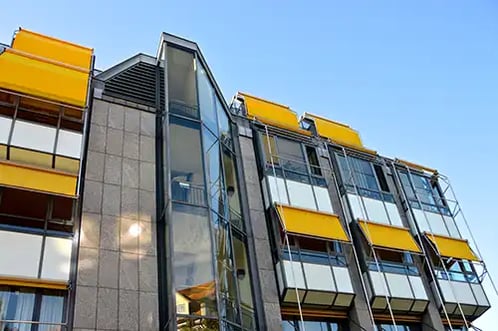
Civic architecture requires a distinct approach, taking into account the community context of a project and the specific needs of local government clients. Architecture firms involved in publicly funded buildings have typically navigated the challenges and fluctuations of this process.
It is rewarding to work on a project that benefits the community or supports mission-critical services like fire or police departments. However, this work also entails navigating the political process and working with city or county officials. These local officials spend taxpayers’ money and could be held accountable for their decisions based on internal audits and public scrutiny. Therefore, architecture firms must seek every advantage possible to make the process go smoothly.
Listening to public-sector clients is always crucial. As the government expands, the process becomes more complex as it must address various stakeholder interests.
The building itself is a key part of the process, but fixtures like awnings are sometimes neglected even though their longevity is vital to the building’s long-term costs. This makes it especially important to know the sourcing of key building materials.
Awnings Provide Energy Savings
Effective use of awnings is an important component of recent environmentally driven design trends, such as passive solar. This energy-saving approach can help public-sector clients who need to find ways to keep costs down over time.
The Department of Energy estimates that awnings can reduce solar heat gain in the summer by 65% on south-facing windows and 77% on west-facing ones. The reduction helps to lower air conditioning costs.
The fabric quality of awnings often significantly affects their effectiveness in reducing energy consumption. Natural fabrics are less opaque than synthetics and, therefore, perform less well. Additionally, low-quality awning fabric may allow too much light through or may degrade over time.
Herculite creates high-performance awning fabrics using vinyl-based polyester composite material. This material is the best at blocking light, and it’s also waterproof and resistant to fading and other damage that might diminish its energy-saving potential.
Durability Is Important to Both Longevity and Energy Savings
To maximize the energy-saving benefits of awnings, architects should choose ones from the highest-quality fabrics. Durable materials last longer without needing to be repaired or replaced. This is especially important for municipal buildings, which can be challenging to maintain. Since these buildings are often used for decades, the longer fixtures can last, the better for everyone.
Herculite awning fabrics are waterproof and resistant to mold and mildew. They weather the elements especially well and stay vibrant over time. Thus, public sector clients can be confident that awnings made from these fabrics won’t degrade prematurely.
Herculite materials have a high degree of structural stability, and many feature a Rain Kleen® topcoat that makes them easy to clean. Overall, greater durability comes with a longer useful life and reduced maintenance costs, both of which are important considerations for cost-conscious public officials who want buildings and their fixtures to last as long as possible.
Made in the USA: A Standard of Quality
The best architecture firms take time to understand the communities they serve. Both average citizens and public officials prefer local building projects that reflect their values. When given a choice, most public officials would choose American suppliers and materials manufactured in the USA over imported alternatives.
Herculite manufactures its awning fabrics in small town Pennsylvania, and its American pedigree assures a higher level of quality. They’ve been an innovative textile company specializing in high performance fabrics for over 60 years. They never use inferior quality lamination as many imported fabrics do.
Herculite uses the highest-quality raw materials and takes pride in its workmanship and US manufacturing operation. Tight control over the manufacturing process ensures the highest quality control standards are met. When Herculite fabrics are used for awnings on publicly funded buildings, local officials can cite another example of how their spending choices support American manufacturing. They can also have high confidence in the quality of their awnings.
Want to learn a little bit more about the importance of awning fabric quality? Download our free guide, "Five Factors to Consider When Determining Awning Fabric Quality"
